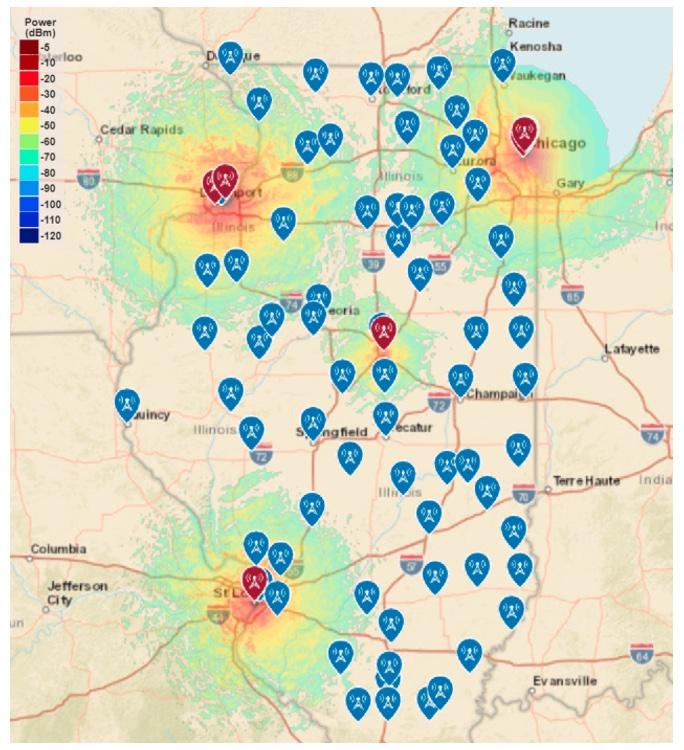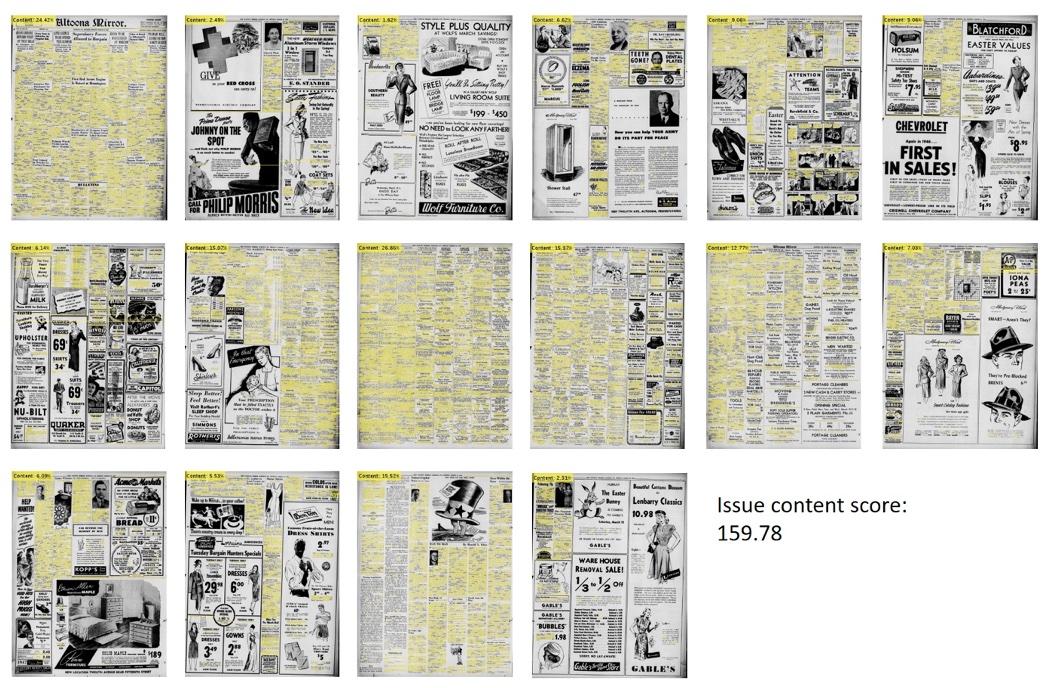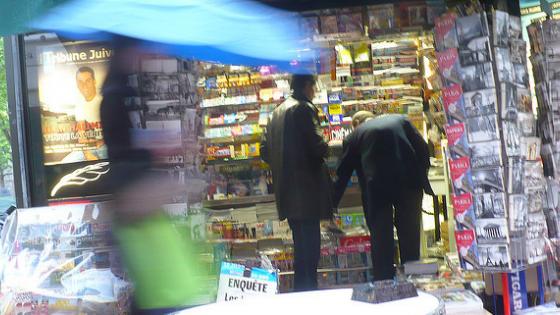“News deserts and ghost newspapers: Will local news survive?” The title of the recent UNC news deserts study1 makes all too clear the dire state of local news in Western democracies. In the US, a quarter of all newspapers have shut down in the past 15 years, and the COVID-19 pandemic has made the local news crisis even worse, with struggling businesses pulling their ads. The disappearance of local journalism has potentially far-reaching political and social consequences, which we are only now beginning to fully appreciate.
Many reasons have been put forward to explain this state of affairs, beginning with the drop in advertising revenues that followed the advent of the internet (Seamans and Zhu 2014). But the local journalism crisis is far from a recent phenomenon, and its roots can be traced back to earlier technological innovations and media revolutions that challenged the business model of local news, particularly the introduction of television.
Traditionally, a local newspaper’s economic model was to bundle its original, local content with different types of third-party content, most prominently syndicated national news. Over the past several decades, technological innovations such as television and the internet have challenged local newspapers’ once unique ability to monetise third-party content through this bundle. The low distribution costs for broadcast media made it possible to reach final consumers directly, bypassing local newspapers.
In a new paper (Angelucci et al. 2020), we investigate how local newspapers adjust their provision of local news when the market for national news becomes more competitive. We then study whether the resulting changes in the amount of local versus national news that individuals are exposed to affect voting behaviour, particularly voters’ propensity to engage in straight-ticket voting across elections.
We use historical data to examine how the entry of television affected local newspapers and media consumption in the US from 1944 to 1964. Technological constraints at the time meant that television stations offered mostly national news and general entertainment programming, whereas virtually all newspapers bundled original local reporting with syndicated national news.
As the rollout of television was not random – television entered larger and wealthier cities first – we exploit an exogenous pause in television penetration: the Federal Communication Commission (FCC) ‘freeze’ in the licensing of new television stations that delayed the entry of television in many newspaper markets by several years (Gentzkow 2006, Gentzkow and Shapiro 2008).
Due to engineering problems, on 30 September 1948, the FCC announced a freeze on the granting of new television licenses. Stations previously authorised were allowed to begin or continue operations – over 100 licenses had already been granted at the time; however, no new licenses were granted. The freeze ended up lasting nearly four years. Our empirical strategy exploits this interruption to TV expansion, which occurred as many mid-size markets were receiving licenses, and which provides us with exogenous geographical variations in the introduction of television.
To formalise the idea that a more competitive national news market may affect a local newspaper’s ability to produce local news, we develop a simple model of newspaper content choice and pricing. In our model, an incumbent media outlet chooses how much of each element of the bundle to include in the product to maximise profits across both the readership and advertising sides of the market. We show that entry in the market for national news makes bundling less profitable by limiting the incumbent’s ability to extract consumer surplus. This diminished ability to leverage bundling, in turn, decreases the incumbent’s incentives to provide both local and national news.
To empirically analyse the consequences of the entry of television, we digitised annual circulation, cover price, advertising rates, and advertising quantity data for the universe of US daily newspapers for 1944–1964. Our dataset covers 1,963 newspapers, 1,537 news markets, and 32,296 newspaper-years. We combine this with data we digitised regarding the first broadcast dates of all television stations in the US. For each station, we observe the tower’s location, height, channel, and broadcasting power. We use this data to construct reception contours to precisely determine which newspaper markets were exposed to television at a given point in time, as illustrated in Figure 1 for Illinois.
Figure 1 Newspaper markets covered by television in Illinois in 1953
Notes: Every red marker represents the location of a television antenna (‘emitter’) and every blue marker represents the centre of a newspaper market (‘receiver’). Both Grade A contours (in yellow) and Grade B contours (in green) are shown (where Grade B contours comprise areas with lower quality signal reception than Grade A contours). Contours are constructed considering topographic conditions.
For a subset of newspapers exposed to the FCC freeze whose content has been digitised, we further gather data on the content of the newspaper itself. We focus on a sample of 102 newspapers that had full issues available from an online archive. We code the content of these newspapers on four dates for each year from 1946 to 1955. We manually measure the quantity of news (categorised by type) versus advertising, photos, and editorials, noting any content sourced from a wire service. We additionally use machine learning techniques to identify the amount of article text on each page of these issues (Figure 2 provides an example).
Figure 2 Content analysis example: Altoona Mirror’s entire issue
Notes: The figure shows an example of using Matlab image processing features to determine a content score (roughly what percent of pixels are used to display news text content). The example here is an entire issue of Altoona Mirror, 10 March 1947.
We find that the entry of television led to a 3.1% decrease in circulation and a 3.3% decrease in subscription price for newspapers in markets exposed to television. This suggests consumer substitution away from newspapers following the introduction of broadcast television. The entry of television was also a shock to the advertising side of the industry: it led to a 2% decrease in newspaper advertising rates and a 3.9% decrease in newspapers’ national advertising quantity.
Next, we investigate the extent to which the entry of television changed newspaper content and, in particular, the provision of local news. We find that following the entry of television, the total number of stories published decreased by 6.6%. The decrease in the number of stories is driven mainly by a 10.1% drop in original local news stories. By contrast, the drop in the number of (wire) national news is small and not statistically significant.
Taken together, the introduction of television with its primarily national focus in news, the fall in local newspapers’ readership, and the lower production of local news by newspapers point to a strong shift towards more national news diets. The resulting change in voters’ news diets, in turn, offers a unique setting to test whether increasingly nationalised news diets lead to greater ‘nationalisation’ of local politics, with potentially significant consequences for local government accountability (Hopkins 2018).
We examine ‘ticket splitting’ in congressional and presidential elections by collecting county-level election data for the period 1932–1964. We document that the entry of television and the crowding out of local information led to less split-ticket voting, implying the nationalisation of local politics.
Our findings have implications for the modern media landscape. A parallel can be drawn between the entry of television and the advent of the internet, which, much like television, constituted a negative shock to the advertising side of the newspaper market (Athey and Gans 2010, Athey et al. 2018). In addition to competing for advertising revenues, the internet is also modifying news companies’ traditional bundles of diverse content.
Because of the fall in distribution costs, local newspapers no longer represent the only channel to reach consumers. Classified ads have moved to specialised online outlets (e.g. craigslist.com or monster.com) and soft news about local communities is provided free of charge on social networks such as Facebook. Similarly, national and international news are now provided almost exclusively by a few of the largest news outlets. Whether local newspapers can profitably provide essential local journalism is an important question that bears on the future of our democracy.
References
Angelucci, C, J Cagé and M Sinkinson (2020), “Media competition and news diets”, CEPR Discussion Paper 14494.
Athey, S, E Calvano and J S Gans (2018), “The impact of consumer multi-homing on advertising markets and media competition”, Management Science 64(4): 1574–90.
Athey, S, and J S Gans (2010), “The impact of targeting technology on advertising markets and media competition”, American Economic Review 100(2): 608–13.
Gentzkow, M (2006), “Television and voter turnout”, Quarterly Journal of Economics 121(3): 931–72.
Gentzkow, M, and J M Shapiro (2008), “Preschool television viewing and adolescent test scores: Historical evidence from the Coleman study”, Quarterly Journal of Economics 123(1): 279–323.
Hopkins, D J (2018), The increasingly United States: How and why American political behavior nationalized, Chicago: University of Chicago Press.
Seamans, R, and F Zhu (2014), “Responses to entry in multi-sided markets: The impact of Craigslist on local newspapers”, Management Science 60(2): 476–93.
Endnotes
1 https://www.usnewsdeserts.com/reports/news-deserts-and-ghost-newspapers-will-local-news-survive/








